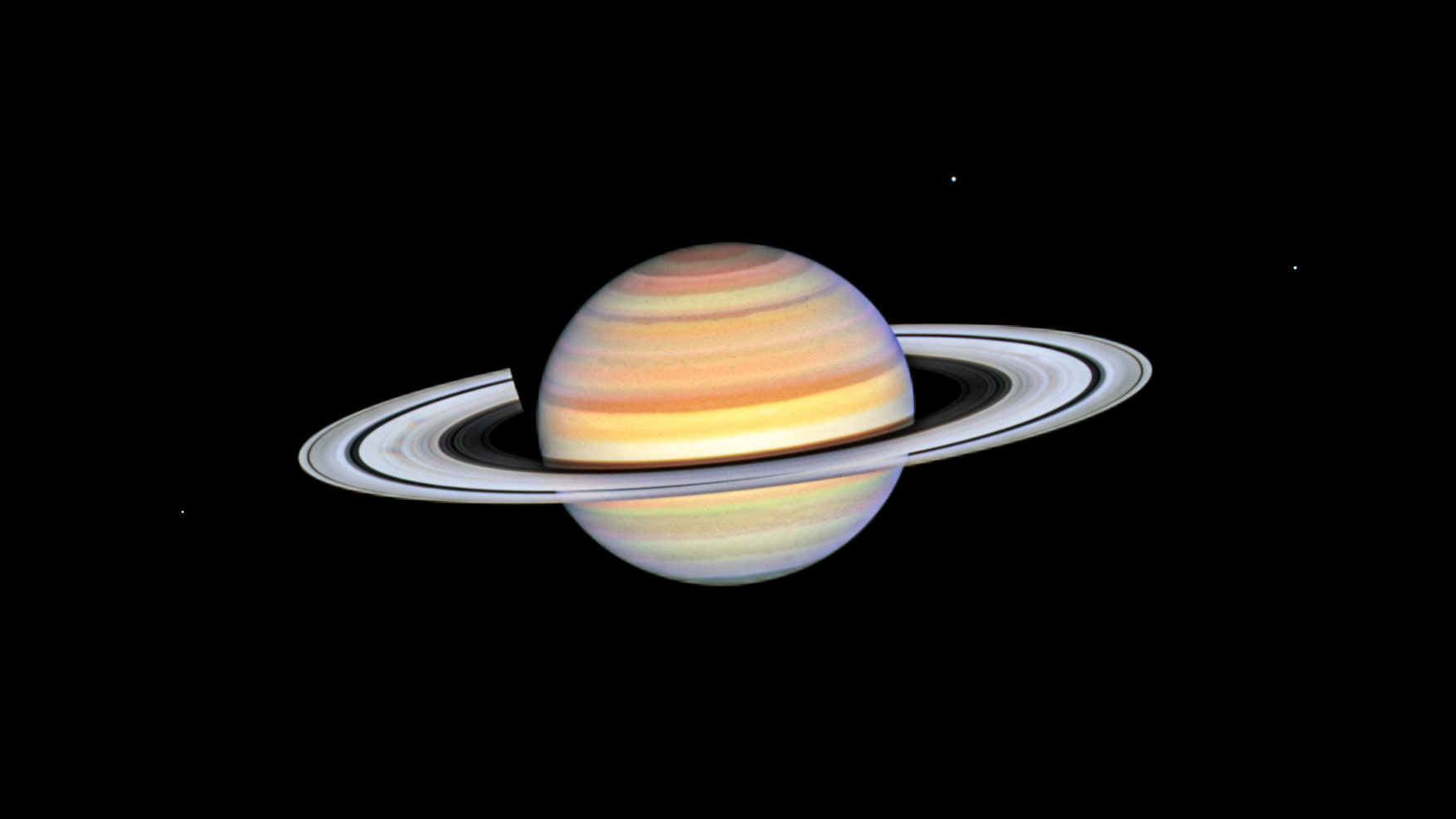4 min read
Cassini Significant Events -- 04/20/06 - 04/25/06
April 28, 2006
(Source: Cassini Project)
The most recent spacecraft telemetry was acquired Tuesday, April 25, from
the Goldstone tracking stations. The Cassini spacecraft is in an excellent
state of health and is operating normally. Information on the present
position and speed of the Cassini spacecraft may be found on the "Present
Position" web page located at
http://saturn.jpl.nasa.gov/operations/present-position.cfm .
Thursday, April 20 (DOY 110)
Radio Science performed periodic instrument maintenance today along with an
Ultra Stable Oscillator characterization.
The Software Requirements and Certification Review for the CDS Command Loss
Timer (CLT) flight software patch occurred today. Since a formal meeting
was not required, the documentation was submitted directly to the System
Engineering Office. This patch is planned for uplink on May 8-11. It
corrects a code error found last September.
Friday, April 21 (DOY 111)
The Mission Support & Services Office has provided some approximate numbers
of the amount of science data that has been collected since January 1, 2004.
The data is complete through April 19, 2006.
Instrument Data
CAPS 26,283,460kbytes
CDA 8,770,209kbytes
CIRS 7,135,426kbytes
INMS 801,804kbytes
ISS 24,057,854kbytes
MAG 10,465,190kbytes
MIMI 8,360,273kbytes
RADAR 1,650,522kbytes
RPWS 39,422,594kbytes
UVIS 6,021,474kbytes
VIMS 5,605,781kbytes
Total science data is 138,574,587kbytes or roughly 132 gbytes.
The final real-time command executed during S19 was an end of sequence
reaction wheel assembly bias.
As S19 drew to a close, the Composite Infrared Spectrometer (CIRS) continued
with 60N latitude Saturn composition measurements and their first northern
hemisphere temperature map of Saturn at 10N latitude, the Cosmic Dust
Analyzer (CDA) continued with a search for Saturnian dust stream particles,
and the Ion and Neutral Mass Spectrometer (INMS) with scans for dense
particle regions far from Saturn.
Saturday, April 22, (DOY 112):
S20 began execution on Friday, April 21, at 11:30PM Pacific Time. The
sequence will run for a little over 41 days and will conclude on June 2.
During this time, five orbit trim maneuvers (OTM) are scheduled, numbers 58
through 62. Status at this time is that OTMs 58 and 59 will execute as
planned, and OTM-060 has been deleted. There will be two targeted flybys of
Titan during S20 numbered Titan 13 and Titan 14. The one live update of the
sequence beginning on DOY 115 was cancelled when existing pointing met
science requirements. This is the first time a sequence has been flown that
has been split using software developed for that purpose.
At the top of S20, science observations included three Imaging Science
Subsystem (ISS) observations of mutual events capturing a transit of
Enceladus across Janus, a transit of Enceladus across Epimetheus, and a
transit of Janus across Epimetheus. In addition, the Ultraviolet Imaging
Spectrograph (UVIS) performed a stellar calibration with the star Alpha
Virginis, and then observed Hyperion in order to measure its UV albedo
across longitude and phase space, and CIRS completed a mid-infrared mapping
of Saturn to determine upper troposphere and tropopause temperature.
Observing temperature gradients and thermal eddies above troposhperic jets
and waves will give information about the dynamical activity and its
propagation or decay into the stratosphere.
Monday, April 24 (DOY 114):
At the weekly Project Science Meeting one of the topics of discussion was a
request from the Titan Orbiter Science Team (TOST) to the Cassini project to
think about a data recovery strategy for Titan 13. The unique data being
captured at T13 includes a UVIS solar occultation and a full synthetic
aperture RADAR swath.
At this time, the most desirable option appears to be that if a DSN outage
occurs during the middle of the downlink, and the project recovers command
capability before the end of the pass, then science would like to propose
uplinking commands to zero-out the Data Policing Table to prevent TOST Data
from being overwritten by cross discipline data during the following
Observation Period and the following downlink.
The PRIME observations that would be zeroed out are a series of Icy
Satellite Observations, all at about 1 to 2 million km distance, and all
high phase. The Magnetospheric and Plasma Science (MAPS) and rider
instruments would also be affected.
There will be a technical coordination meeting tomorrow with the S20
sequence leads, Spacecraft Operations, Mission Planning, and Science
Planning to discuss implementation of this request.
FOLLOWUP: After the Project Science Meeting, the rings group appealed to
the Project Scientist to reevaluate the decision of what data should be
preserved in the event of a DSN outage during playback. The fact that rings
observations would also be played back during the time of concern had been
unintentionally overlooked at the meeting. The final decision will be made
Wednesday.
Tuesday, April 25 (DOY 115):
The remaining files for the April 1 Archive delivery have been received. All teams have now delivered 100 percent of the data.







